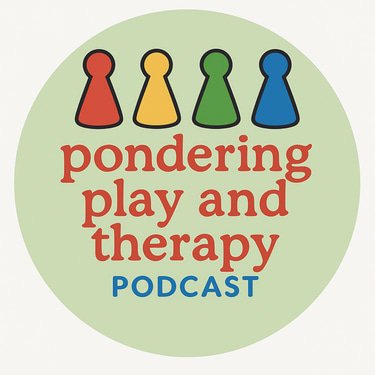Play Therapy and Animal-Assistance: Insights from Jasmine Williams
In Episode 38 of the Pondering Play and Therapy Podcast, Philippa was joined by Jasmine Williams — a play therapist, teen counsellor, animal-assisted therapist, and experienced teacher based in Queensland, Australia. With over 20 years in education and a career that has evolved through teaching, lecturing, and therapeutic work, Jasmine brings a wealth of experience and passion for child-centred approaches.
Philippa with AI Assistance
9/26/20253 min read


From Teaching to Play Therapy
Jasmine began her professional life working with very young children in childcare and kindergarten settings, where play-based learning formed the heart of her practice. Over time, she noticed the increasing complexity of children’s needs and the struggles many families were facing. Wanting to offer more individualised support, Jasmine retrained as a play therapist and has since built a thriving practice supporting children and families in her community.
She shared how the COVID-19 pandemic became a turning point — prompting her to shift away from university lecturing into postgraduate study in child-centred play therapy. “It’s the best thing I’ve ever done,” Jasmine reflected.
Play Therapy for Children and Teens
Many people picture therapy as sitting on a couch and talking, but play therapy offers something very different. Jasmine explained that play therapy is grounded in connection and trust. Children use play, creativity, and imagination to express their inner worlds in ways that don’t always come easily through words.
Teens, too, can benefit from play-based approaches. In Jasmine’s practice, therapy with adolescents might include sand tray work, art, board games, or even online play through telehealth. What matters most is creating a safe, interest-driven environment where young people can build confidence and agency.
The Four Stages of Play Therapy
Jasmine described the therapeutic journey children often take, moving through four stages of play:
1. Exploratory – becoming familiar with the space and building a connection with the therapist.
2. Aggressive – asserting power, control, and testing limits. This doesn’t always mean physical aggression; it may appear through perfectionism, competitiveness, or resistance.
3. Regressive – a deepening stage where nurturing themes, caretaking play, and coping strategies emerge. Much of the therapeutic growth takes place here.
4. Mastery – where confidence, resilience, and agency shine through, and the child is ready to transition out of therapy.
These stages aren’t linear. Children may move back and forth depending on life events and external environments — such as changes in family life, schooling, or care placements. What remains consistent is the child-led pace of the process.
The Role of the Environment
A powerful reminder from Jasmine was that therapy doesn’t happen in isolation. Children need safe, supportive environments outside the therapy room too. “We are not magicians,” she explained. “If they are still returning to environments that have negative impacts, we can only do so much.”
This underlines the importance of collaboration between therapists, families, schools, and wider support networks.
Animal-Assisted Therapy
One of the most heartwarming aspects of Jasmine’s practice is the inclusion of her rescue dog, Glen. Still in training as a therapy dog, Glen has already transformed sessions with his gentle presence. Jasmine has observed how children soften when he enters the room, showing nurturing behaviours, empathy, and connection.
For some children, it is easier to build trust with an animal than with an adult. Glen helps model safety, care, and acceptance — and offers a “third presence” that changes the dynamic in meaningful ways.
Why Play Therapy?
While many associate play therapy with trauma and early life adversity, Jasmine emphasised its benefits for a wide range of needs, including:
Family separation or divorce
Peer difficulties and bullying
Anxiety and low self-esteem
School struggles and academic pressures
Neurodiversity, including ADHD and autism
Social and emotional development delays
Above all, play therapy provides children with a rare space to simply be. A non-pressured environment where they are free to explore, test boundaries, take risks, and experience acceptance.
Final Thoughts
This conversation was a rich reminder of the healing power of play and the importance of child-centred approaches. Whether through a sand tray, a board game, or a gentle nuzzle from Glen the therapy dog, play therapy offers children a safe container to process their inner worlds, build resilience, and strengthen their sense of self.
You can connect with Jasmine via her website or follow her work on Instagram and Facebook at @connectionsptc
👉 Listen to Episode 38: Play Therapy and Animal-Assistance with Jasmine Williams now on Spotify, Apple Podcasts, or your preferred podcast platform.
